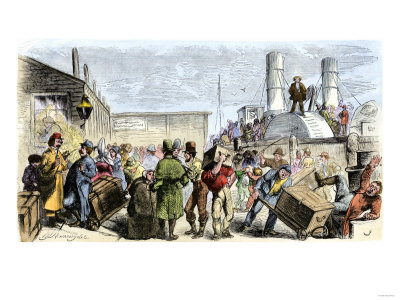Jun 16 2011
Posted by Mendo under June 16 Assignment
Slavery system
 Throughout the 19th century, the primary occupation of people living in Kentucky was farming whereas for New Yorkers was manufacturing and constructing. All the dirty and hard works like producing hemp, and processing tobacco were attended to by slaves. The number of slaves appeared to relate to the production of market-oriented crops and not to the amount of land owned and farmed. Also the small farming tasks were performed by slaves.Although slaves were free and not owned, they had been given the most difficult tasks than any others. In contrast to kentucky, New York was one of the developed city where prominent Americans used to live there. As there were many renowned individual living in the city, they were able to import and own the slaves even just to make their standard in the society.
Throughout the 19th century, the primary occupation of people living in Kentucky was farming whereas for New Yorkers was manufacturing and constructing. All the dirty and hard works like producing hemp, and processing tobacco were attended to by slaves. The number of slaves appeared to relate to the production of market-oriented crops and not to the amount of land owned and farmed. Also the small farming tasks were performed by slaves.Although slaves were free and not owned, they had been given the most difficult tasks than any others. In contrast to kentucky, New York was one of the developed city where prominent Americans used to live there. As there were many renowned individual living in the city, they were able to import and own the slaves even just to make their standard in the society.
The demand for slaves were mainly for manufacturing, construction, and other household works. In contrast to New York, between 1850-1860 Kentucky used to export more slaves than did any other states (wikipedia ,”Slaves in Kentucky”). African American slaves used to be exported through Tennessee and Mississippi river from kentucky to New York and other states. During 19th century as all people living there were engaged to farming and crop production, there were no people owning any slaves. There was no demand for slaves whereas in New York, the demand was higher for the purpose of manufacturing, construction etc. The business was mostly depending on the slavery trade.
 ave their share of differences and similarities. The most obvious difference is that one is a city from the North while the other is a city from the South. Each has it’s own different lifestyle. With the North being more notable for freedom for slaves and industrial services, the South was none for its intolerance towards slave freedom and their agriculturalist lifestyle. For New Orleans, this wasn’t held completely true. New Orleans “resembled northern counterparts in their commercial functions and social complexity” ( Chudacoff and Smith page 72) Although they were one of the few cities that had commercial functions, the business people relied heavily on the Northern capital and markets. This big one similarity, one difference between New Orleans and New York was that in New York diversity was well known and in a sense accepted. In New Orleans the French speaking people and the English speaking people had to be divided in the city “between a French quarter and an American Quarter, separated by a street with a broad medican called the Neutral Zone” (Chudacoff and Smith page 67) The diverse population in New York was in a sense mixed weren’t living in their own sections as was the case in New Orleans.
ave their share of differences and similarities. The most obvious difference is that one is a city from the North while the other is a city from the South. Each has it’s own different lifestyle. With the North being more notable for freedom for slaves and industrial services, the South was none for its intolerance towards slave freedom and their agriculturalist lifestyle. For New Orleans, this wasn’t held completely true. New Orleans “resembled northern counterparts in their commercial functions and social complexity” ( Chudacoff and Smith page 72) Although they were one of the few cities that had commercial functions, the business people relied heavily on the Northern capital and markets. This big one similarity, one difference between New Orleans and New York was that in New York diversity was well known and in a sense accepted. In New Orleans the French speaking people and the English speaking people had to be divided in the city “between a French quarter and an American Quarter, separated by a street with a broad medican called the Neutral Zone” (Chudacoff and Smith page 67) The diverse population in New York was in a sense mixed weren’t living in their own sections as was the case in New Orleans.





